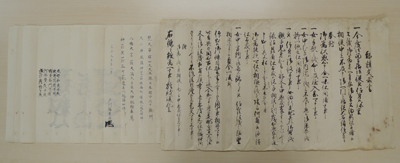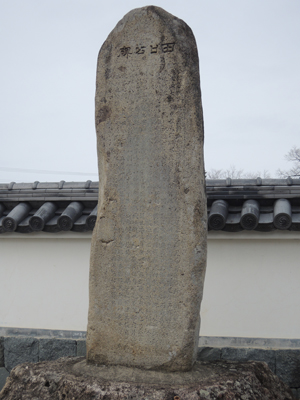Subject: Why did the Tokugawa Shogunate last for more than 260 years? --Revealing the governance structure of modern Japan My major research objective is to investigate the governance structure of the Tokugawa Shogunate through the study of hatamoto, which refers to government bureaucrats in the Edo period. While they are referred to as government bureaucrats, hatamoto?unlike the bureaucrats in the modern government?had territories granted by General Tokugawa along with their duties and had the characteristic of federal lord. Therefore, in order to elucidate the governance system of the Tokugawa Shogunate, it is important to paint a real picture of not only daimyo (feudal clans) but also hatamoto who were involved in both the bureaucracy and lordship under the Tokugawa Shogunate. In particular, since the situations of hatamoto in their territories have not been explained for the most parts; I have worked on the examination based on documentary records from the Edo period. The lordship of hatamoto in the Edo period was not limited to their territories. As in the case of daimyo, many tasks such as making tax payments to the lord and managing community expenses were performed by village officials representing farmers. Furthermore, based on the cases I have investigated so far, sometimes those village officials even managed the household budget of their lord. It has not been known at all in Japanese history studies that the people of the domain managed the finance and household budget of their lord. However, discovering such historical facts allows us to accurately understand the modern Japanese governance structure and provides great clues to paint the overall picture. Comparing the characteristics of the bureaucracy developed by the Tokugawa Shogunate to those of East Asian countries during the same period should also become an academically meaningful task. I would like to continue contributing to the study of political history in the Edo period by going beyond the traditional framework by focusing on hatamoto and their territories in various parts of Japan and closely examining historical records on both samurai warriors and villages.  The document a hatamoto submits to the Tokugawa Shogunate at the time of assuming the role (prepared in the 19th century, the Cabinet Library at the National Archives of Japan)  A monument erected by village officials honoring their Tokugawa Shogunate official (hatamoto) (installed in 1828, Higashine City, Yamagata Prefecture) Principal areas of interest ● Analyze the lordship of hatamoto ● Explain the relationship between Edo and surrounding villages ● Political activities of influential individuals in regions under direct control of the Tokugawa Shogunate |














